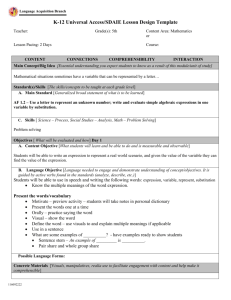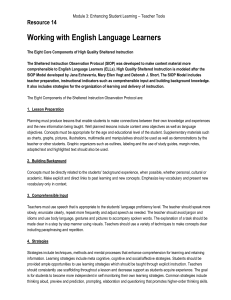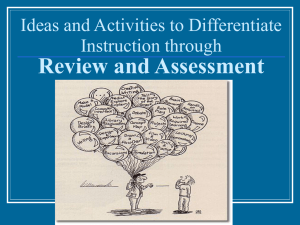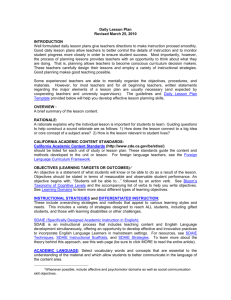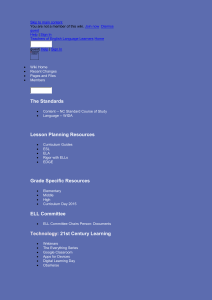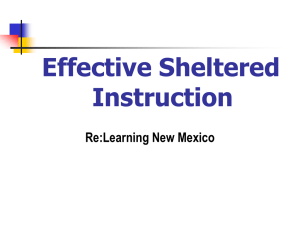Which techniques related to Specially Designed Academic
advertisement
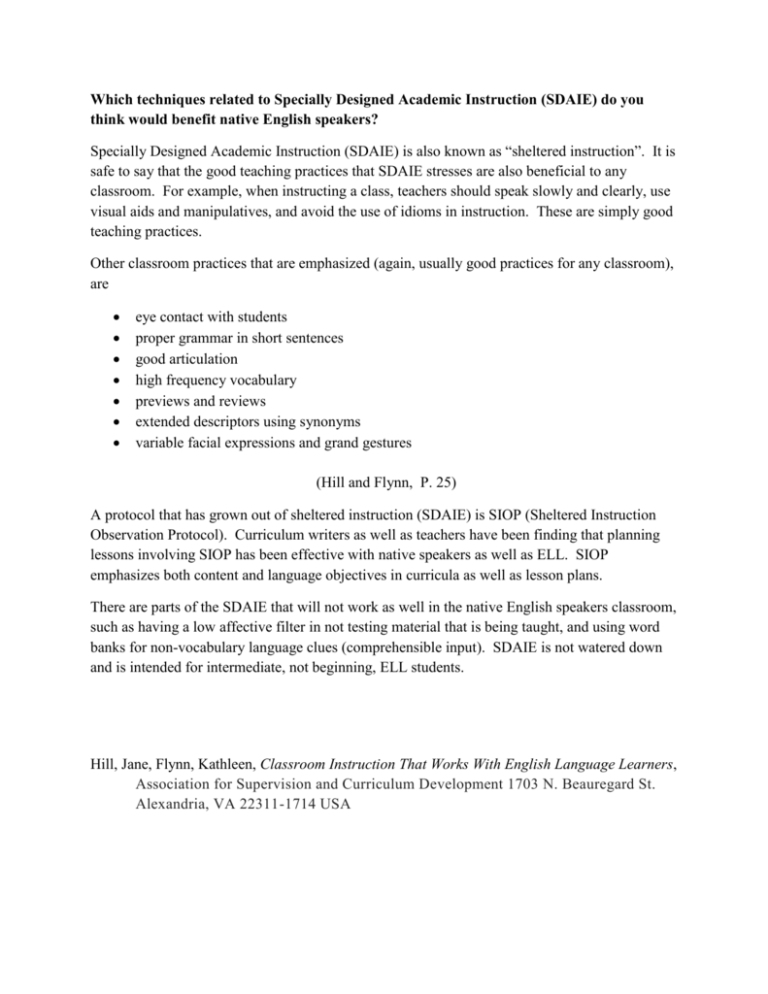
Which techniques related to Specially Designed Academic Instruction (SDAIE) do you think would benefit native English speakers? Specially Designed Academic Instruction (SDAIE) is also known as “sheltered instruction”. It is safe to say that the good teaching practices that SDAIE stresses are also beneficial to any classroom. For example, when instructing a class, teachers should speak slowly and clearly, use visual aids and manipulatives, and avoid the use of idioms in instruction. These are simply good teaching practices. Other classroom practices that are emphasized (again, usually good practices for any classroom), are eye contact with students proper grammar in short sentences good articulation high frequency vocabulary previews and reviews extended descriptors using synonyms variable facial expressions and grand gestures (Hill and Flynn, P. 25) A protocol that has grown out of sheltered instruction (SDAIE) is SIOP (Sheltered Instruction Observation Protocol). Curriculum writers as well as teachers have been finding that planning lessons involving SIOP has been effective with native speakers as well as ELL. SIOP emphasizes both content and language objectives in curricula as well as lesson plans. There are parts of the SDAIE that will not work as well in the native English speakers classroom, such as having a low affective filter in not testing material that is being taught, and using word banks for non-vocabulary language clues (comprehensible input). SDAIE is not watered down and is intended for intermediate, not beginning, ELL students. Hill, Jane, Flynn, Kathleen, Classroom Instruction That Works With English Language Learners, Association for Supervision and Curriculum Development 1703 N. Beauregard St. Alexandria, VA 22311-1714 USA
